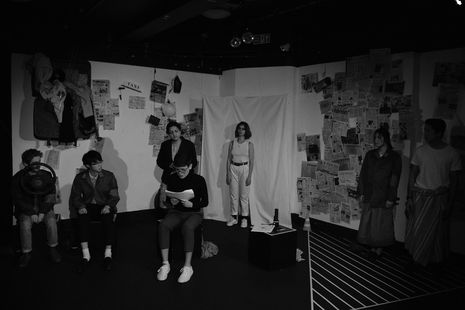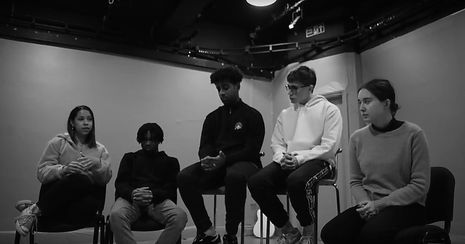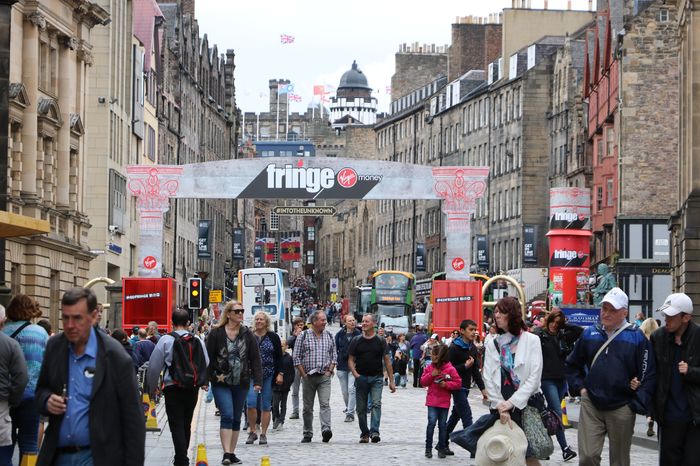The Narrative and the Body: Representation in the Arts
Ananya Mishra explores the relationship between minority representation and physical manifestation of the body on stage

At Edinburgh International Festival 2019, I watched Sydney Theatre Company’s acclaimed stage adaptation of Kate Grenville’s novel The Secret River. Narrated by an Australian Aboriginal Elder, the play depicts the early conflict between British settlers and Indigenous Australians and portrays the violence of colonial invasion. The particular show that I attended– having heard rave reviews of the central narrator played by Walmadjari actor Ningali Lawford-Wolf– had a delayed opening. Ningali had taken seriously ill that afternoon, and I read the tragic news a day later that she had sadly passed away. For that evening’s performance, therefore, her character was replaced by another actor who narrated the tale, taking the space of the central narrator sitting on the side of the stage which on other evenings must have been realised by Ningali’s presence on stage.
Working towards visible casting will be slow in a place that’s yet to even admit an increased number of minority students, let alone represent them in the arts
This was perhaps why, for that evening, the play did not hold the meaning it had promised (another concern of course was watching the play with an audience that was majority white). The emphasis was no longer about the trauma of colonialism for Australian Indigenous communities and how that is central to remember as part of our shared histories, but shifted towards the settler perspective on the trials of a British ex-convict’s escape from England and his eventual conflicts with an Indigenous community. The central Indigenous narrator’s absence on stage was for me a shift in the narration itself.
This left a cautionary afterword of sorts. Visibility is crucial for representation, or the driving force of the narrative itself shifts, and the story risks practicing erasures of voice that may not seem apparent. I dwelled on it more as I was directing Abhishek Majumdar’s The Djinns of Eidgah at the Edinburgh Fringe, which centered around the Indian occupation of Kashmir and the plight of occupied Kashmiris. We did not have any Kashmiri people in our crew. We were a group of minority actors from diverse communities in the UK, in solidarity with the Kashmiris, playing Kashmiris, whereas the space of the Indian soldiers was occupied by two white actors. This was the only way we felt the power dynamic could be depicted– through partially analogous casting choices: the brute Hindu nationalist state’s armed occupation equated with white settler colonialism.

The story that the play depicted gathered heightened relevance at the Fringe, as Article 370 offering special status to Jammu and Kashmir was abrogated during the play’s run. It drew Kashmiris at Edinburgh and those visiting in solidarity to share through the medium of this play as the tragedy unfolded back home. The staging of the story allowed a space for reflecting on the Indian occupation of Kashmir in the UK. However, I could not help but struggle everyday with the absence of Kashmiris themselves in our stage adaptation, and what voices were being erased, reminding me of that adaptation of The Secret River. Visibility takes an intensely political form in relation to communities such as Indigenous Australians who have been historically constructed as ‘absent’ (Australia deemed as ‘terra nullius’) or Kashmiris, categorically ‘disappeared’ by a powerful regime (contemporary Indian state’s censorship of Kashmir).
This has made me reflect more deeply on the need of both the minority narrative and the body to occupy theatrical and cinematic spaces. What our theatre stages and cinema screens need is definitely a diversity of world narratives and stories, rich with multifaceted voices and the nuanced understanding of the histories that have affected us and continue to affect our social and political lives. But equally important is the representation of those voices, through visible presence, by making a space where minority communities can themselves voice out their stories as well as own and invigorate with their presence our oft-performed classics. Arundhati Roy, the Booker prize winning novelist of The God of Small Things writes, “There’s really no such thing as the ‘voiceless’. There are only the deliberately silenced, or the preferably unheard.” Rethinking this quote in the context of representation in contemporary theatre and film, we need to address with urgency, the bodies, stories and voices that we may be erasing and silencing. Fixing the representation issue in the arts cannot be relegated to the convenient sidebar of BME drop-in hours, or race-blind, gender-blind auditions; neither can a play become a radical production by merely having one person of colour play a central role.
We need to address with urgency, the bodies, stories and voices that we may be erasing and silencing
Both narratives and casting choices need rigorous thought. There are no straight-forward answers, and of course working towards visible casting will be slow in a place that’s yet to even admit an increased number of minority students, let alone represent them in the arts! What is more important is that we start asking critical questions. Together. Given that Cambridge acts as a microcosm for problems we are faced with on a larger scale, it can serve as a space to try out solutions that can be thought out and applied here, and in turn affect larger platforms world-wide, by the creative leadership that goes on to join industry. Bread Theatre and Film Company’s two productions this term are on less-depicted, often ignored, histories. Arinze Kene’s God’s Property directed by Hannah Shury-Smith is the story of the trials of two mixed-race brothers during the 1980s racial tensions in Deptford, South London. Chong Tze Chien’s Pan Island Expressway directed by Saad Siddiqui is about the Singaporean ‘Marxist conspiracy’ focusing on state censorship and arbitrary detention of dissenting civilians. I see this multiplicity of narratives as systematically carving out a space for stories, in institutions and world stages, where there are none. And to enable this, it’s so heartening to see a solidarity working in Cambridge and people already working on or at least reflecting on specificities of casting!
What we do in theatre and film is ultimately about people. And if more than half the people are not engaged in this endeavour, and if more than half of the stories do not get a stage because they have been historically dispossessed of these spaces and their voices, then it leaves us with no art only a continued enabling of the same cages of power we are seeking to break. Art is an act of radical hope, an act of world-building and solidarity which allows us to tell stories that are otherwise often made absent. Representation in art, therefore, needs that we tirelessly engage with people, situations and difficult questions at every step to build a ‘diversity of resistance’. This constant engagement helps fight and uproot outdated and harmful notions about race and gender which should not be afforded space within any institution or art form.
(For the ideas and thought process on The Djinns of Eidgah mentioned in this article, my grateful thanks to co-directors Safieh Grace Kabir, Sneha Lala and Hannah Shury Smith and the teams)
Ananya Mishra is the co-founder of Bread Theatre and Film Company.
 Interviews / You don’t need to peak at Cambridge, says Robin Harding31 December 2025
Interviews / You don’t need to peak at Cambridge, says Robin Harding31 December 2025 Comment / What happened to men at Cambridge?31 December 2025
Comment / What happened to men at Cambridge?31 December 2025 News / Unions protest handling of redundancies at Epidemiology Unit30 December 2025
News / Unions protest handling of redundancies at Epidemiology Unit30 December 2025 News / Varsity’s biggest stories of 202531 December 2025
News / Varsity’s biggest stories of 202531 December 2025 News / Downing investigates ‘mysterious’ underground burial vault 29 December 2025
News / Downing investigates ‘mysterious’ underground burial vault 29 December 2025










